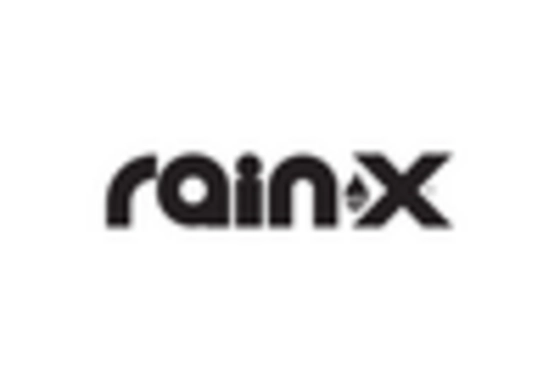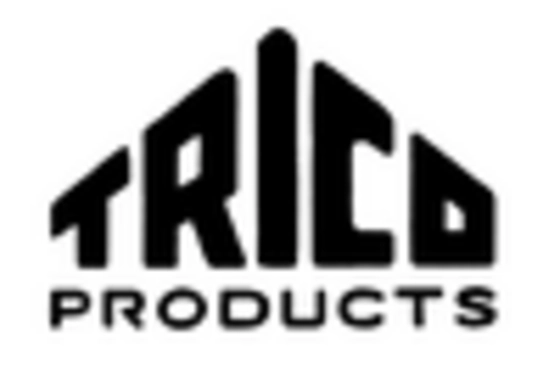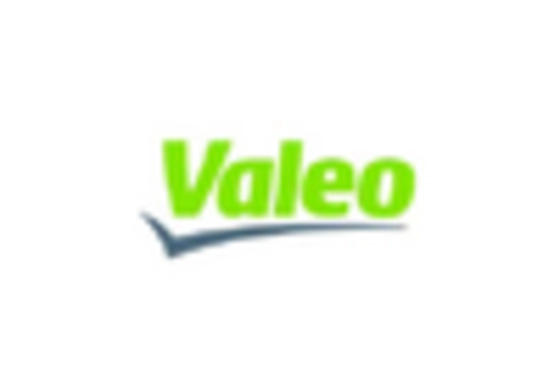Growth of Aftermarket Sales
The Windshield Wiper Blades Market is benefiting from the growth of aftermarket sales, which is becoming a vital segment of the overall market. As vehicle owners become more inclined to replace worn-out wiper blades rather than purchasing new vehicles, the aftermarket for wiper blades is expanding. In 2025, it is estimated that aftermarket sales could account for over 40% of the total wiper blade market. This trend is driven by the increasing availability of a wide range of replacement options, including premium and budget-friendly products. Retailers and online platforms are enhancing their offerings, making it easier for consumers to find suitable replacements. Consequently, the growth of aftermarket sales is likely to provide a substantial boost to the Windshield Wiper Blades Market, as it caters to the needs of existing vehicle owners.
Increasing Vehicle Production
The Windshield Wiper Blades Market is poised to benefit from the rising production of vehicles across various segments. As manufacturers ramp up production to meet consumer demand, the need for high-quality windshield wiper blades becomes paramount. In 2025, the automotive sector is projected to produce over 90 million vehicles, which directly correlates with the demand for windshield wiper blades. This surge in vehicle production is likely to drive the market, as each vehicle requires a set of wiper blades. Furthermore, the trend towards enhanced safety features in vehicles necessitates the use of advanced wiper systems, thereby propelling the Windshield Wiper Blades Market forward. The interplay between vehicle production rates and wiper blade demand suggests a robust growth trajectory for the industry.
Rising Awareness of Road Safety
The Windshield Wiper Blades Market is significantly influenced by the increasing awareness of road safety among consumers. As more individuals recognize the importance of maintaining clear visibility while driving, the demand for efficient and reliable windshield wiper blades escalates. In recent years, campaigns promoting safe driving practices have highlighted the role of functional wiper systems in preventing accidents. This heightened awareness is reflected in consumer purchasing behavior, with many opting for premium wiper blades that offer superior performance. The market is expected to see a shift towards high-quality products, as consumers prioritize safety features. Consequently, this trend is likely to bolster the Windshield Wiper Blades Market, as manufacturers respond to the demand for enhanced safety solutions.
Environmental Regulations and Standards
The Windshield Wiper Blades Market is increasingly shaped by stringent environmental regulations and standards aimed at reducing automotive emissions and promoting sustainability. Governments are implementing policies that encourage the use of eco-friendly materials in automotive components, including windshield wiper blades. This shift towards sustainability is prompting manufacturers to innovate and develop products that align with these regulations. For instance, wiper blades made from recyclable materials are gaining popularity, appealing to environmentally conscious consumers. As the industry adapts to these regulatory changes, it is likely to see a rise in demand for sustainable wiper blade options. This trend not only supports environmental goals but also positions the Windshield Wiper Blades Market favorably in a market that is increasingly prioritizing sustainability.
Technological Innovations in Wiper Systems
The Windshield Wiper Blades Market is experiencing a wave of technological innovations that are reshaping product offerings. Advancements such as smart wiper systems, which utilize sensors to detect rain and adjust wiper speed accordingly, are gaining traction. These innovations not only enhance user convenience but also improve safety by ensuring optimal visibility during adverse weather conditions. The integration of materials that resist wear and tear is also becoming prevalent, extending the lifespan of wiper blades. As consumers increasingly seek out technologically advanced solutions, the market is likely to witness a shift towards these innovative products. This trend indicates a promising future for the Windshield Wiper Blades Market, as manufacturers invest in research and development to meet evolving consumer expectations.


















Leave a Comment